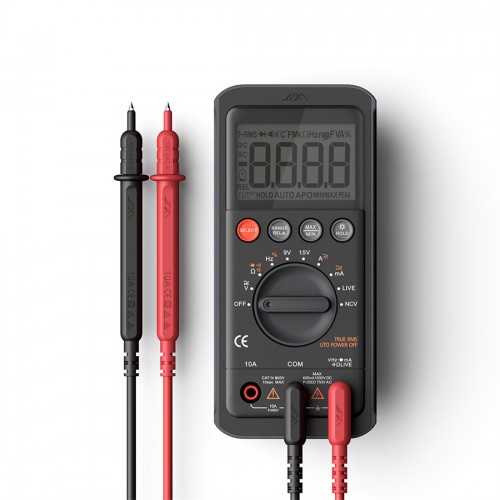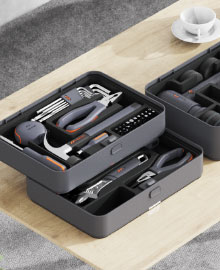
A comprehensive tool kit represents a builder's core advantage for essential work like checking wood and driving screws with precision. This tutorial furnishes understanding to pick the right implements and employ them properly.
- Kick off by assembling key hand tools including hammers, screwdrivers, adjustable wrenches, pliers, saws, and tapes.
- Become familiar with tool functionality and the unique contexts where they apply.
- Develop techniques through active projects, gradually making tasks more complex.
Note that dedicating time to hand tool mastery improves your abilities. With thorough expertise, tools will enhance your capacity to deliver precise, demanding project outcomes.
Supercharge Your Builds with Power Tools
Ready to transform your projects? Delve into the amazing world of power tools, where precision and efficiency converge. These must-have tools can change the game for professionals and casual builders alike. From heavy-duty drills to intricate saws, power tools offer a spectrum of capabilities to tackle any construction project with ease.
- Explore cordless impact drivers to simplify fastening and dismantling tasks.
- Learn to operate reciprocating saws for swift and tidy cutting of varied materials.
- Boost woodcraft quality with high-power planers and jointers for accurate finishing.
Tap into power tool benefits to shorten completion times and enhance final outcomes.
Spot-On Measurements Simplified
Where accuracy is paramount, choosing ideal measuring tools has major impact. From simple tapes to intricate micrometers, indispensable measuring aids ensure precise realization of plans. Whether veteran artisan or new hobbyist, mastering essential measuring tools opens many possibilities.
- Uncover the broad assortment of measuring tools for different applications.
- Learn the specific uses and benefits of each type of tool.
- Enhance skillset in precise measuring and application practices.
Tool Sets for Every Task
From pros to hobbyists, a correct toolkit makes all the difference in projects. For tasks from screws to assembly, a quality set improves precision, workflow and safety. Base your toolkit selection on the nature of jobs you do often.
Will a comprehensive multi-tool set be useful or is a specialized kit sufficient? After mapping requirements, evaluate different models and brands on features, quality and cost. Read feedback from other buyers online to collect practical advice prior to choosing.
With focused research and preparation you'll locate the right set to accomplish projects reliably.
Sharpening and Caring for Your Essential Hand Tools
Taking good care of your hand tools is essential for any craftsman. Failing to care for tools results in dullness, breakage and poor work quality. Sustained care maintains tools in top condition for prolonged reliable use. Begin with wiping and cleaning tools post-use to clear grime and particles. Keep your tools dry in storage to reduce rust and prolong life.
- Sharpen your blades regularly using a sharpening stone or file.
- Treat moving parts with suitable oil to decrease wear and friction.
- Look over handles for defects or breaks and change out as needed.

By following these simple maintenance tips, you can maximize the lifespan of your hand tools and enjoy a more efficient and rewarding work experience.
Basic Hand Tools Every Home Workshop Needs
A stocked home workshop offers a great space for hobbyists and DIY practitioners. While specialty tools can be useful, having a solid foundation of essential hand tools is key to tackling a wide range of projects. Key items feature a quality hammer, a multi-purpose adjustable wrench and a durable tape measure for exact measurements. Stock multiple screwdriver types, pliers for gripping tasks and a utility knife for material cutting. A capable saw handles precise cutting and a level preserves alignment and straightness.
- Key Hand Tools for DIY Workspaces

Power Tool Safety: A Practical Handbook
Power tools constitute robust equipment delivering significant power and productivity. However, these formidable machines also require a deep understanding of safety protocols. Skipping proper safeguards can produce significant injury risks. This handbook clarifies safety for power tool use and provides practices to work safely.
Begin by familiarizing yourself with your tools. Read the manuals carefully, and understand the specific safety features. Continually use appropriate protective equipment including glasses, ear defenders and gloves. Carry out routine maintenance to keep tools functioning properly.
Remember, safety is a priority in any workshop. By sticking to these safety guidelines you can handle power tools with assurance.
Choosing Measuring Instruments for Precision
For dependable measurements, the tool selection you make is vitally significant. A diversity of measuring devices is offered, each purpose-built for specific needs. Insight into each tool's attributes is key to choosing properly. Evaluate factors including precision, resolution and measurement method when choosing a tool.
- When measuring length accurately, a ruler or tape is the standard choice.
- To determine angles correctly, rely on a protractor.
- Digital calipers are ideal for measuring small dimensions.
By carefully selecting the appropriate measuring tools, you can ensure accurate and reliable results.
Picking the Optimal Tool Set

Searching for the right tool set may be exciting and somewhat intimidating. As options multiply, feeling overwhelmed is understandable. This detailed guide provides insight to help you find the ideal set for your purposes.
Firstly, identify the project kinds you'll be engaging in. Are you a pro or a starter? Definitive goals assist in reducing options.
- Mixing hand and power tools often yields the best, most efficient outcomes Don't be afraid to combine blend utilize both power and hand tools for a successful productive efficient outcome Mixing hand and power tools often yields the Hand Tools best, most efficient outcomes
- Concentrate on securing essential tools
- A good quality hammer mallet sledgehammer
- Screwdrivers, adjustable wrenches and pliers—an adaptable kit is essential
- Measuring essentials: tape or ruler
- Leveling tools like level, plumb bob or transit
Other considerations include construction materials, cost constraints and manufacturer reputation. Note that spending on sturdy tools pays off over time.
Tackle Your Projects with Confidence: Mastering DIY Tools
Embarking on your first DIY project can seem daunting. However, with the right equipment and know-how, the toughest tasks can be managed. Begin by studying and understanding your tools. Review guides carefully and practice fundamental techniques in a secure environment. Put safety first as your primary priority. Adopt safety equipment—goggles, gloves and ear defenders—to defend against hazards.
When it comes to choosing tools, quality durability sturdiness matters. Invest in trustworthy makers whose products endure and serve well.
Turn to professionals or veteran DIYers at hardware stores for helpful advice. Ask them for tips, insights and suggestions to find the most suitable tools for needs.
- Remember, a sharp tool is a safe tool.
- Keep tools stored and organized to avoid misplacement and harm.
- Venture into new projects to broaden DIY experience and skills
When to Use Power Tools Versus Hand Tools
On a home or workshop task? Determining whether to use power or hand tools can be puzzling. While powerful robust heavy-duty power tools offer speed and efficiency, classic hand tools remain essential valuable indispensable for precise work and smaller jobs. Use the following overview to choose the correct tool category for your project.
- Hand tools are best suited for fine, precise tasks such as carving, assembling and delicate repairs. Hand tools commonly offer better control and are more economical options.
- When speed is key—cutting, drilling or sanding—power tools deliver quick, efficient results. They dramatically reduce time and manual labor required.
At the end, the optimal choice depends on project needs, user skill and cost considerations. Blend both tool types where appropriate to maximize productivity and precision.
